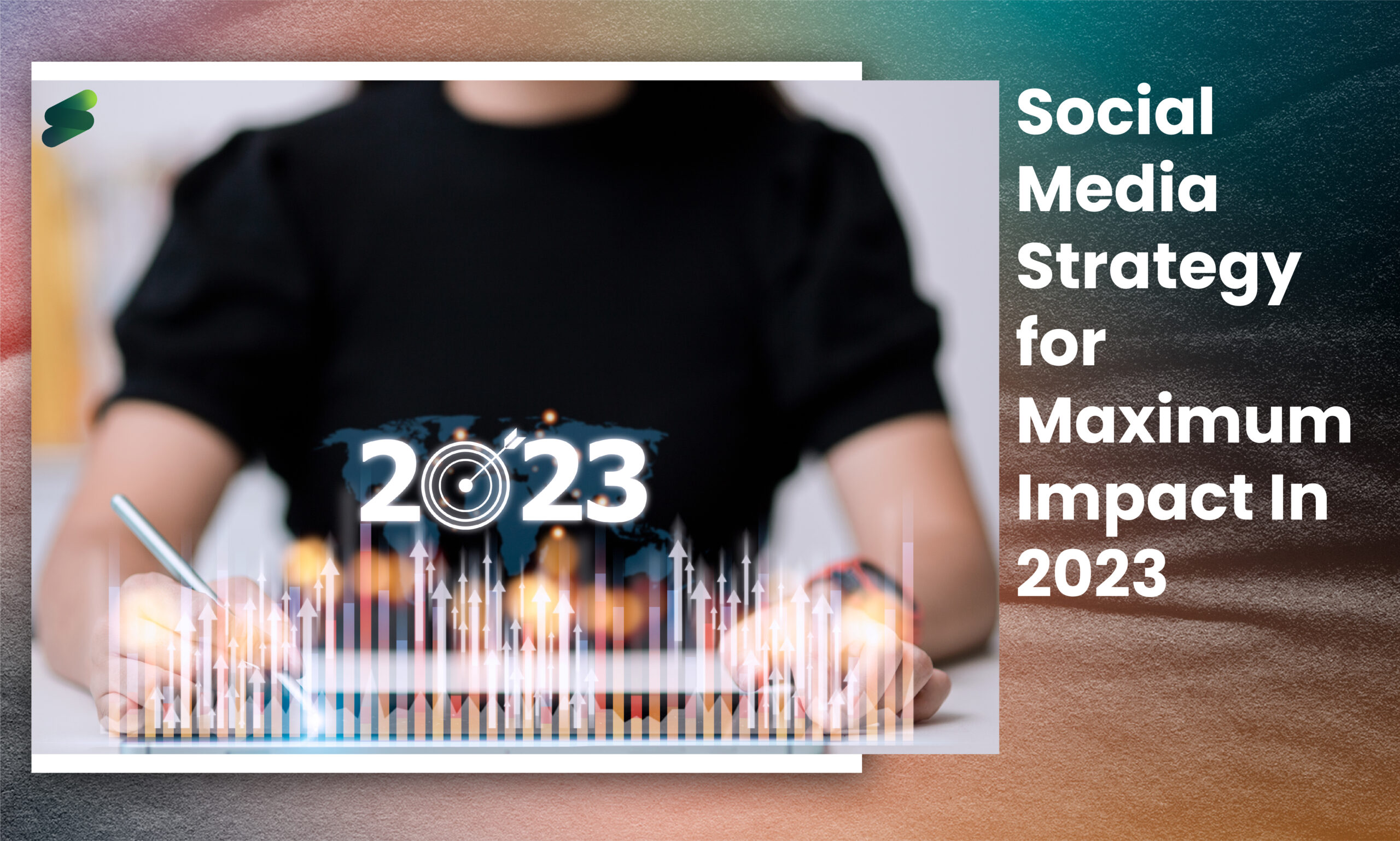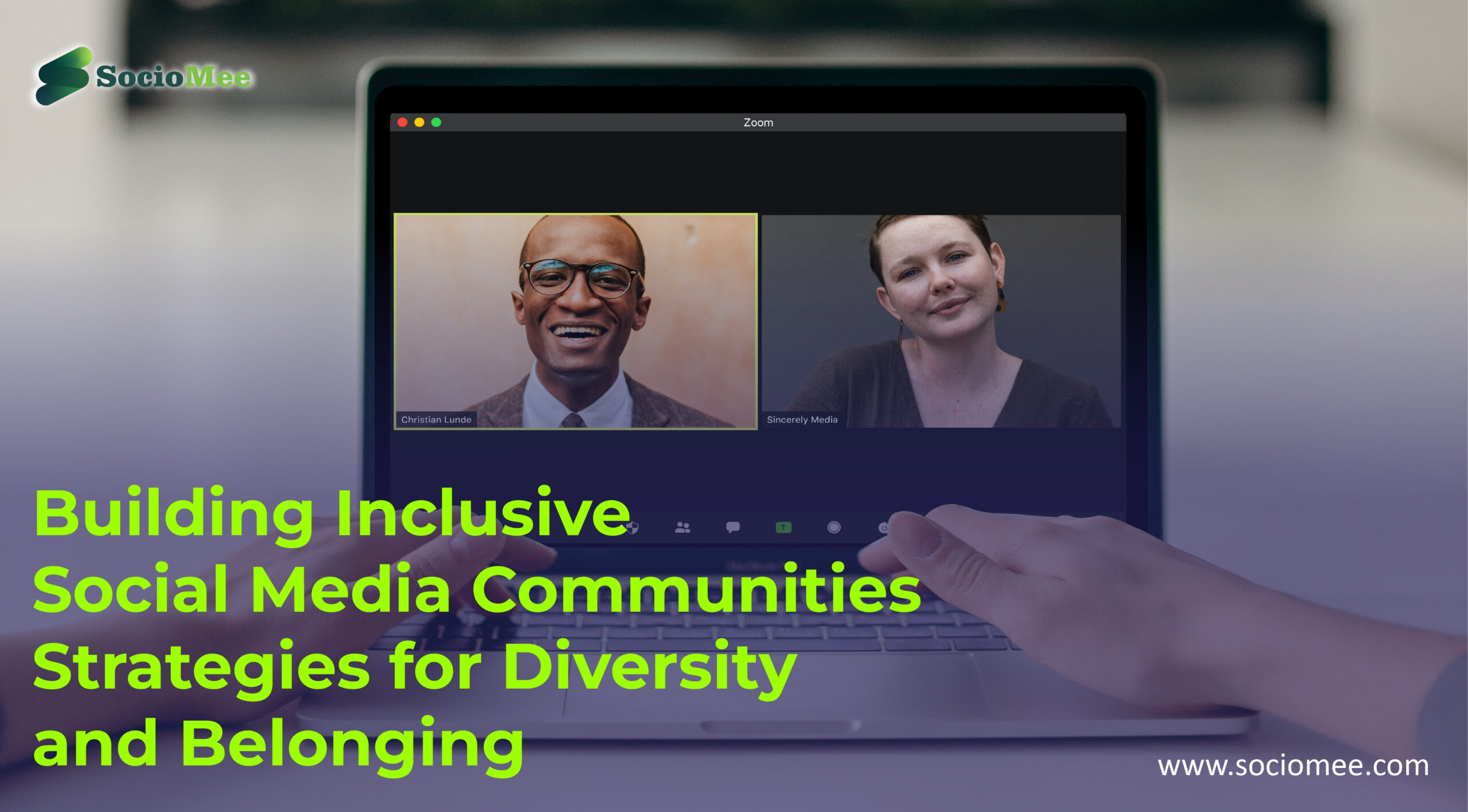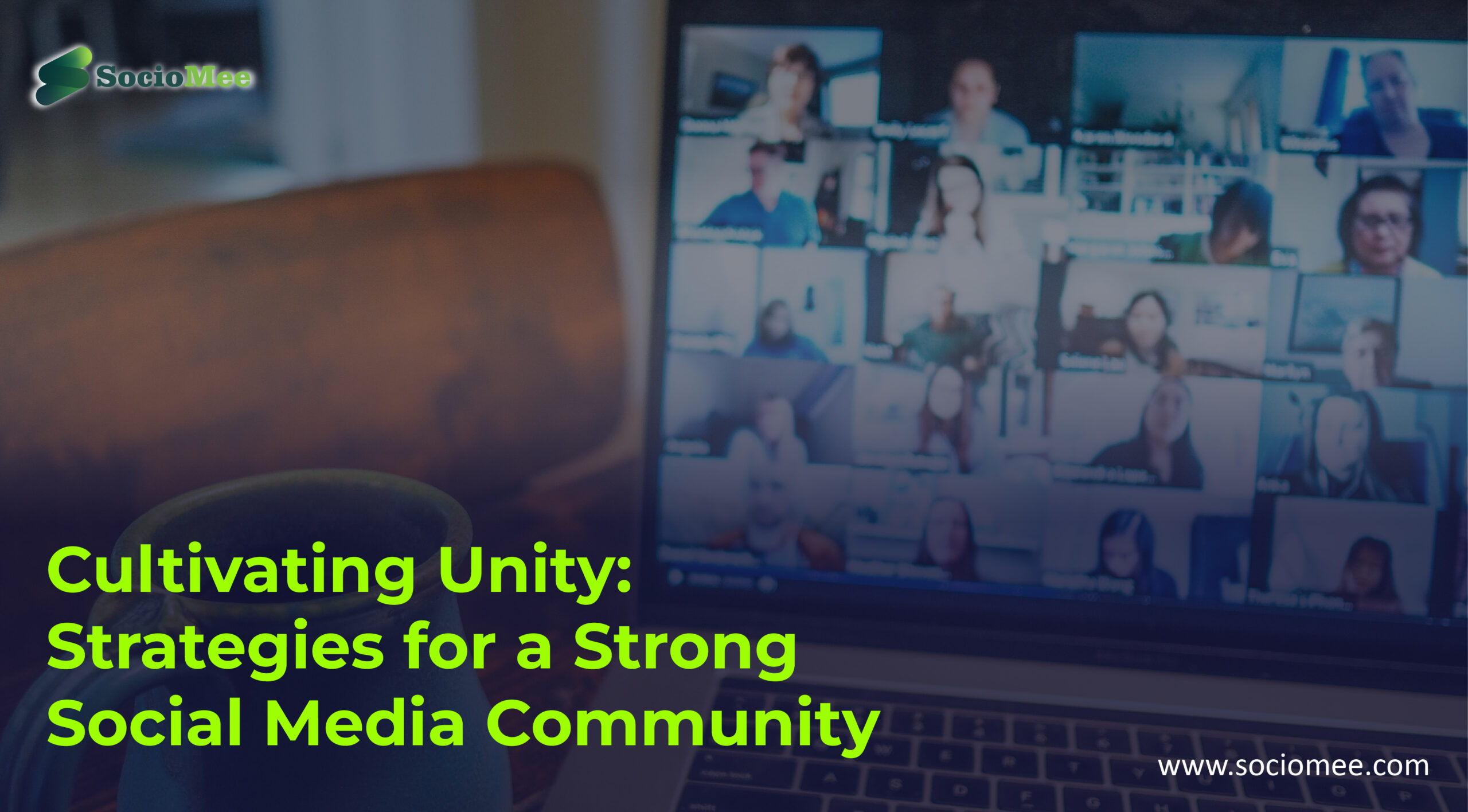As the world of digital marketing continues to evolve, crafting an effective social media strategy is essential for businesses of all sizes. With the right strategy in place, businesses can maximize their impact in the digital space and maximize their return on investment. In this article, we will explore the key components of an effective social media strategy in 2023, including goals, objectives, content creation, platform selection, and analytics.
We’ll also discuss how to create a comprehensive plan for maximum impact in the coming years.
#1. Evaluating Your Current Social Media Presence and Goals for the Future
Evaluating your current social media presence and setting goals for the future is an important part of any digital marketing strategy. By taking a deeper look at your current social media presence, you can gain insight into how you are performing and make adjustments to your strategy to ensure you are reaching your desired results.
When evaluating your current social media presence, it’s important to look at a number of different metrics. This includes your followers, engagement rate, post reach, website visits, conversions, and other relevant data. For example, if your followers are growing but your engagement rate is low, you may need to adjust your content strategy to ensure your followers are engaging with your posts. It’s also important to set goals for the future. For example, you may want to increase your followers by 10% in the next month, or you may want to increase the post reach by 20% in the next quarter. Setting realistic goals can help you measure your progress and make adjustments as needed. By taking the time to evaluate your current social media presence and set goals for the future, you can ensure your digital marketing strategy is as effective as possible.
This can help you reach your desired results and maximize your return on investment.
Explore new social community
#2. Establishing Your Target Audience and Defining Your Brand Message
Establishing your target audience and defining your brand message are two essential steps to creating an effective marketing plan. Understanding who your target audience is and what messages will resonate with them will help you create a campaign that will successfully reach your ideal customers and help you stand out from the competition. The first step in establishing your target audience is to identify your ideal customer.
Think about who your product or service is designed for, and then use research and surveys to understand their demographics, interests, and needs. Once you have identified who your target audience is, you can start to craft your brand message. Your brand message should be something that resonates with your target audience and sets your brand apart from the competition. Consider your unique selling point and create a message that communicates your brand’s core values and mission.
This will help your target audience understand why they should choose your brand over others. Once you have established your target audience and defined your brand message, you can create a marketing plan that will help you reach your ideal customers. Consider the channels and tactics that will be most effective for your target audience and focus on creating content that aligns with your brand message. By taking the time to identify your target audience and define your brand message, you will be able to create an effective marketing plan that will help you reach your goals.
#3. Making the Best Social Media Platform Assortments for Your Brand
Making the best social media platform assortments for your brand is key to success in today’s digital world. With so many different platforms available, it can be difficult to determine which ones are best for your company. Here are a few tips to help you make the right choice.
- Know Your Target Audience: The most important factor to consider when selecting a social media platform is who your target audience is. Different platforms have different user demographics and you want to make sure you choose the one that best suits your brand. For example, if you are a B2B company, LinkedIn may be a better choice than SocioMee.
- Understand the Platforms: Once you know who your target audience is, it’s important to research the different platforms. Take the time to understand how each one works and what type of content is best suited for it. This will help you decide which platform is best for your company.
- Consider Your Content: Different platforms offer different content types that may be more suitable for your brand. For example, if you are looking to create engaging visuals, Instagram may be a better choice than Twitter. On the other hand, if you are looking to share long-form content, then Facebook or LinkedIn may be better suited.
- Test and Track: After selecting the platforms you want to use, it’s important to test and track their performance. This will help you determine which platforms are working for you and which ones need to be adjusted or replaced.
By following these tips, you can ensure that you choose the right social media platforms for your brand. With the right platform selection and consistent content, you can maximize your reach and engagement with your target audience.
A new social world is rising
#4. Creating Engaging and Relevant Content for Your Audience
Creating engaging and relevant content for your audience is an essential part of any successful marketing strategy. Utilizing content to engage and inform your target audience is one of the best ways to increase brand awareness, generate leads, and drive conversions. To ensure that your content is engaging and relevant, there are several key steps and strategies you should follow.
- First, you should take the time to understand your target audience and their needs. By getting to know your audience, you can create content that will appeal to them and be relevant to their interests. Researching your target audience will also help you decide which platforms and channels are best for distributing your content.
- Next, you should create content that is both accurate and timely. Utilizing data-driven insights to inform your content will help you create relevant and engaging content that resonates with your audience. Additionally, create content that is timely and up-to-date to ensure that your audience is always well-informed.
- Finally, you should use visuals to make your content more engaging and appealing. Visual content is more likely to be shared than text-based content, so utilizing visuals can help you reach a wider audience. Additionally, adding visuals to your content can help break up large blocks of text and make it easier to digest.
By following these strategies, you can create engaging and relevant content that will appeal to your target audience. Taking the time to understand your audience, create timely and
#5. Developing and Implementing an Effective Social Media Advertising Strategy
Developing and implementing an effective social media advertising strategy is essential for businesses that want to grow and thrive in today’s digital landscape. Social media advertising offers businesses a cost-effective way to reach larger audiences and get their message out in an increasingly crowded digital world.
When it comes to developing and implementing an effective social media advertising strategy, there are a few key steps to consider. First and foremost, businesses must determine what their goals are and what they are trying to achieve through their social media advertising efforts. Goals can range from brand awareness and engagement to lead generation and sales. Once businesses have established their goals, they need to determine their target audience and decide which social media channels are best suited for reaching them. Once businesses have identified their target audience and chosen their social media channels, they need to create content that will engage their audience.
This content should be tailored to the interests and needs of their target audience and should be updated regularly. Additionally, businesses should use data and analytics to track the performance of their social media campaigns, so that they can adjust their strategies accordingly. Finally, businesses should use effective advertising techniques to maximize the reach of their campaigns. This includes using social media advertising tools such as promoted posts, sponsored stories, and targeted ads. Businesses should also consider using retargeting to reach users who have already interacted with their brand.
By following these steps, businesses can develop and implement an effective social media advertising strategy that will help them to achieve their goals and reach their target audience.
#6. Tracking and Analyzing Your Results for Continuous Improvement
Tracking and analyzing your results for continuous improvement is an important part of any business or organization. By tracking and analyzing your results, you can make better decisions about how to improve your processes, products, and services. It is also an important way to measure progress and ensure successful outcomes. Tracking and analyzing your results involve collecting data on key performance indicators (KPIs) and measuring them over time.
This enables you to better understand how your organization is performing and to identify areas that need improvement. It is important to set up a system to regularly measure and track KPIs so that you can make timely adjustments to your processes and strategies. When analyzing your results, it is important to look at both quantitative and qualitative data. Quantitative data includes metrics like financial performance, customer satisfaction, and operational efficiency. Qualitative data includes customer feedback, employee opinions, and market trends.
Both types of data can provide valuable insights into how well your organization is doing and can help you identify areas for improvement. Once you have gathered and analyzed your data, it is important to take action. This could involve making changes to processes or policies, developing new products or services, or launching new marketing campaigns. It is also important to track your results over time and make adjustments as needed. This will help you ensure that your improvements are having the desired effect. Tracking and analyzing your results for continuous improvement is an important way to ensure that your organization is successful.
By gathering and analyzing data, you can identify areas for improvement and take action to ensure that your organization is successful over the long term.
#7. Establishing a Social Media Crisis Management Plan
When it comes to managing a social media crisis, having a plan in place is essential. A social media crisis management plan can help you quickly and effectively respond to an unexpected situation and mitigate any potential damage to your company’s reputation. Before a crisis occurs, you should establish procedures for monitoring and responding to social media activity.
This includes setting up social media accounts, monitoring key metrics, and having a system in place to quickly respond to customer inquiries or complaints. When creating a social media crisis management plan, it’s important to identify a team of people who will be responsible for responding to any issues that arise. This team should include a designated spokesperson who will be responsible for communicating with the public and the media during a crisis.
Additionally, you should assign roles to each team member, such as monitoring social media, responding to customer inquiries, and liaising with the media. In addition to establishing a team, it’s important to develop a strategy for handling a social media crisis. This should include guidelines for responding to customer inquiries, handling criticism, and mitigating any potential damage to your company’s reputation. Finally, it’s important to practice crisis management scenarios. This will help you ensure that your team is prepared and able to respond quickly and effectively in the event of a social media crisis. By developing a social media crisis management plan, you can prepare your team for any potential issues that may arise.
This will help you ensure that any social media issues are handled quickly and professionally, and that any damage to your company’s reputation is minimized.
#8. Leveraging Influencers to Increase Your Reach and Impact
Leveraging influencers to increase your reach and impact is a powerful marketing strategy used by many companies to boost their brand exposure and reach their target audience. Influencers can be celebrities, industry experts, bloggers, or social media personalities with a large following. By partnering with an influencer, companies can increase their exposure and reach a wider audience, while also building trust and credibility with potential customers.
When it comes to leveraging influencers, it is important to choose the right ones. This means looking at their engagement, relevance to your brand, and the size of their following. You want to select influencers who are a good fit for your brand and can reach the right audience. Once you have identified the right influencers, you can begin to build a relationship with them.
This includes providing them with exclusive content, opportunities for collaboration, and access to exclusive events. You can also offer them incentives such as free products and discounts on your products. When it comes to leveraging influencers, it is important to measure the success of your campaigns. You can use various tools to track the number of followers and engagement of your influencers, as well as the reach and impact of your campaigns. This will allow you to adjust your strategy accordingly and maximize the success of your campaigns. Leveraging influencers is a great way to increase your reach and impact.
With the right strategy and the right influencers, you can build trust and credibility with your target audience while also getting your message out to a wider audience.
Conclusion
In conclusion, crafting a comprehensive social media strategy in 2023 is essential for any business that wants to stay competitive and maximize its impact. The key to success is to focus on creating a strategy that meets the needs of the company and its target market. This should include taking the time to understand the different platforms, developing a content plan, engaging with followers, and monitoring the performance of the strategies.
By taking the time to develop a comprehensive strategy, businesses can ensure their social media presence is a positive one and that they are making the most of the opportunities available to them.









